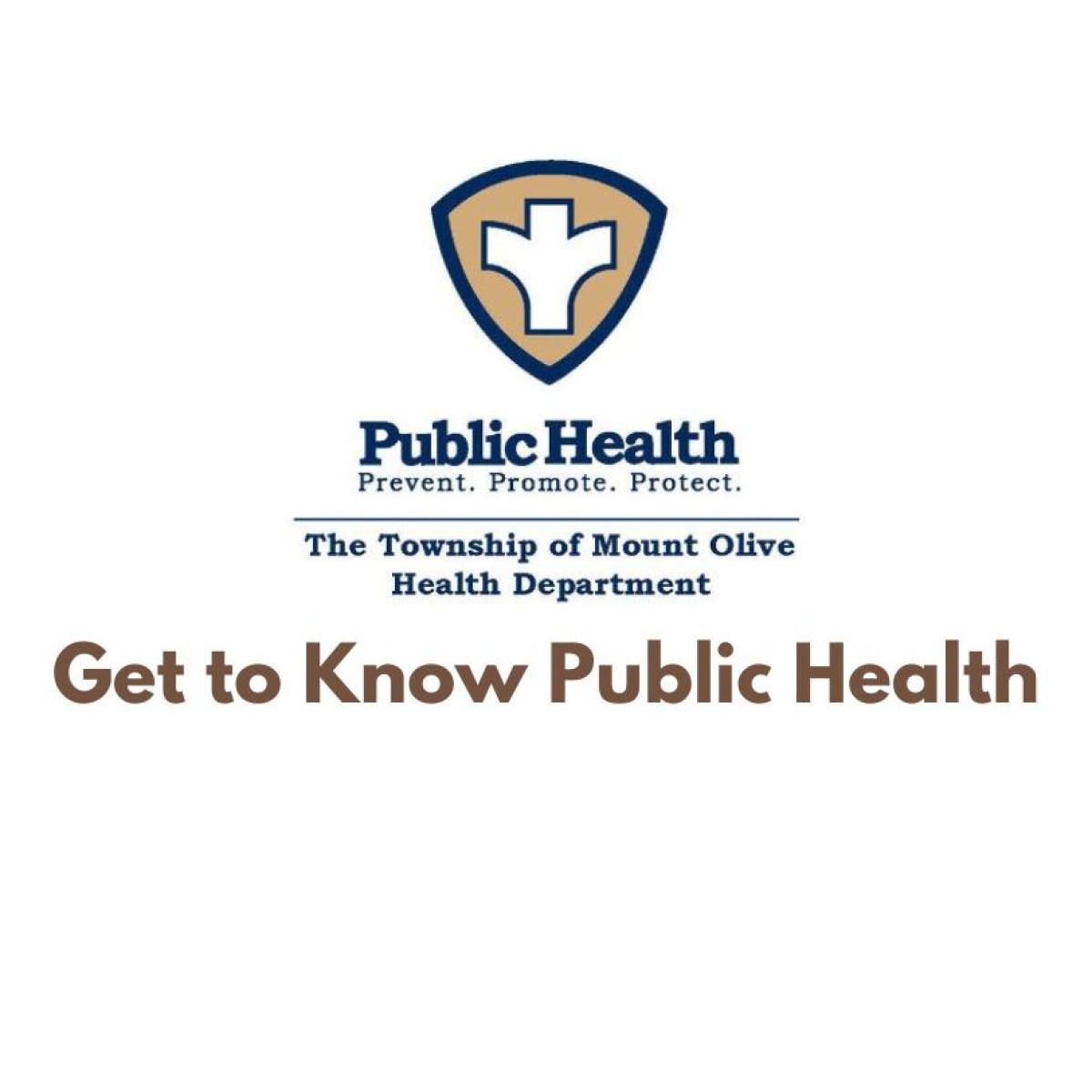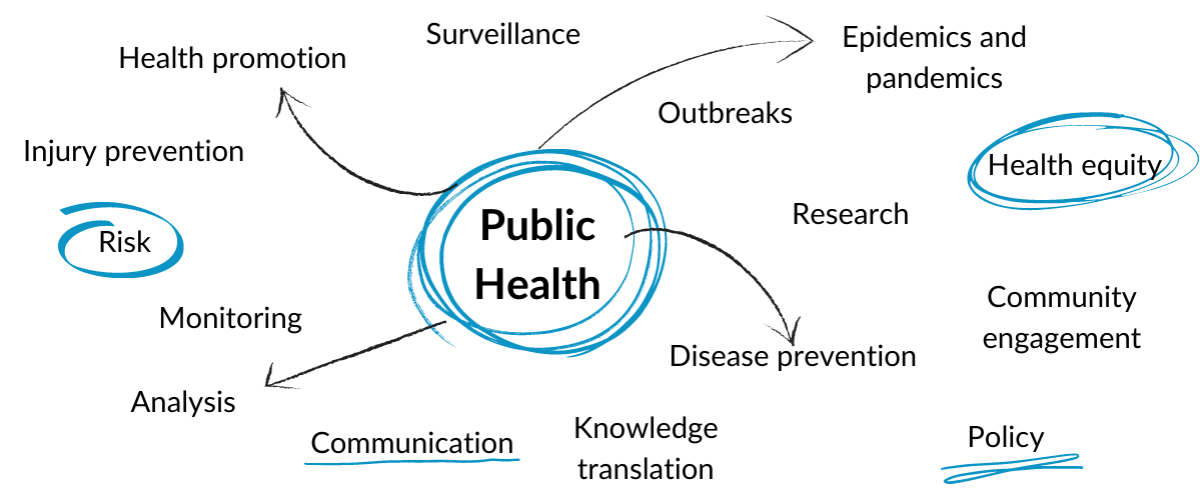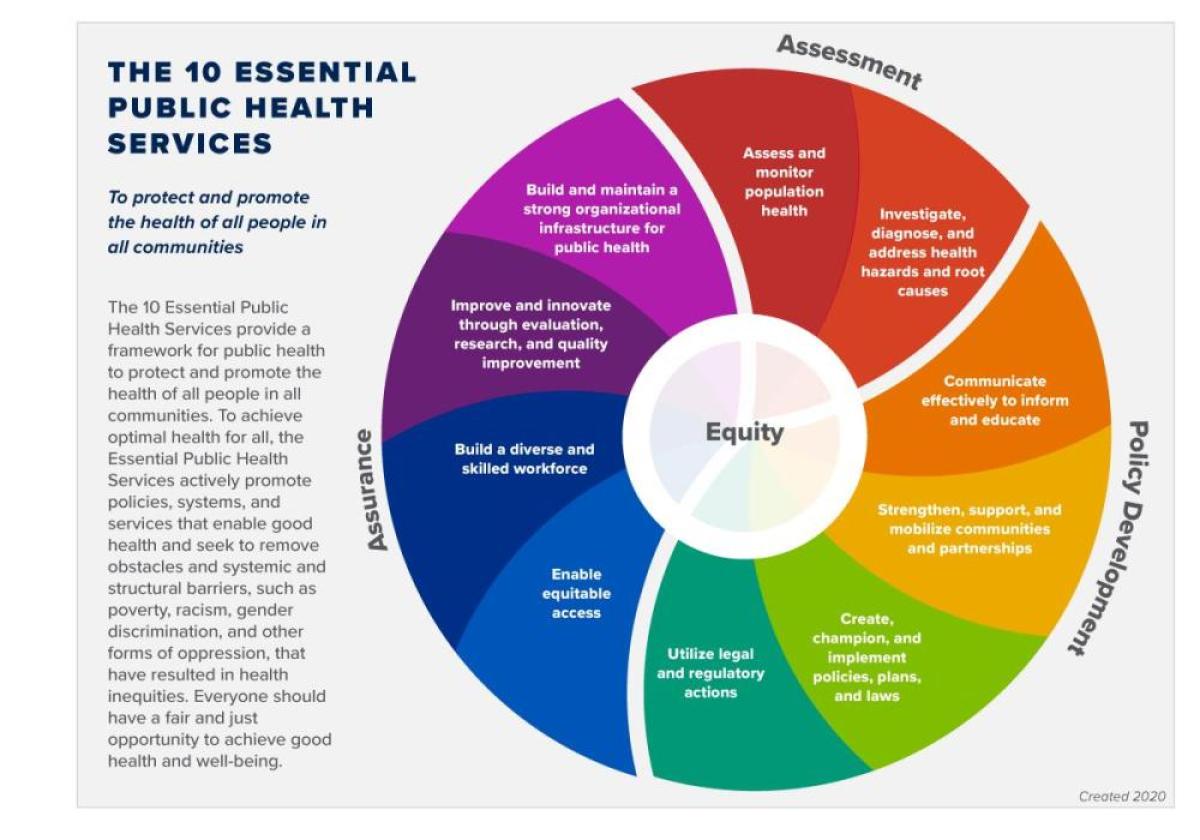

What is Public Health?
Public health is the science of protecting and improving the health of people and their communities. This work is achieved by promoting healthy lifestyles, researching disease and injury prevention, and detecting, preventing, and responding to infectious diseases.

10 Essential Services of Public Health- Essential Public Health Services (Revised, 2020)
The 10 Essential Public Health Services provide a framework for public health to protect and promote the health of all people in all communities. To achieve equity, the Essential Public Health Services actively promote policies, systems, and overall community conditions that enable optimal health for all and seek to remove systemic and structural barriers that have resulted in health inequities. Such barriers include poverty, racism, gender discrimination, ableism, and other forms of oppression. Everyone should have a fair and just opportunity to achieve optimal health and well-being.
- Assess and monitor population health status, factors that influence health, and community needs and assets
- Investigate, diagnose, and address health problems and hazards affecting the population
- Communicate effectively to inform and educate people about health, factors that influence it, and how to improve it
- Strengthen, support, and mobilize communities and partnerships to improve health
- Create, champion, and implement policies, plans, and laws that impact health
- Utilize legal and regulatory actions designed to improve and protect the public’s health
- Assure an effective system that enables equitable access to the individual services and care needed to be healthy
- Build and support a diverse and skilled public health workforce
- Improve and innovate public health functions through ongoing evaluation, research, and continuous quality improvement
- Build and maintain a strong organizational infrastructure for public health
Public health made global headlines recently. But how exactly do we define it?
Here's an excellent way to describe the essence of public health.
In the medical field, clinicians treat diseases and injuries one patient at a time. In public health, researchers, practitioners, and educators prevent disease and injury at the community and population level. We identify the causes of disease and disability and implement large-scale solutions.
For example:
- Instead of treating a gunshot wound, we work to identify the causes of gun violence and develop interventions to prevent it.
- Instead of treating premature or low birth-weight babies, we investigate the factors at work, and we develop programs to keep babies healthy.
- Instead of prescribing medication for high blood pressure, we examine the links among obesity, diabetes, and heart disease—and we use data to influence policy aimed at reducing all three conditions.
Today, public health encompasses areas as wide-ranging as epigenetics, chronic disease, the science of aging, mental health, disaster response, refugee health, injury prevention, and tobacco control. Microbiologists work to find vaccines, while behavioral scientists research ways to change behaviors. Epidemiologists identify trends in health and illness, looking for links, causes, and interventions in areas such as infant mortality and infectious diseases like AIDS and tuberculosis. Environmental health scientists work to discover which foods prevent cancer, while health policy analysts evaluate health insurance programs and make recommendations. (John Hopkins Bloomberg)
100 Objects That Shaped Public Health
Source: CDC.gov & APHA.org
